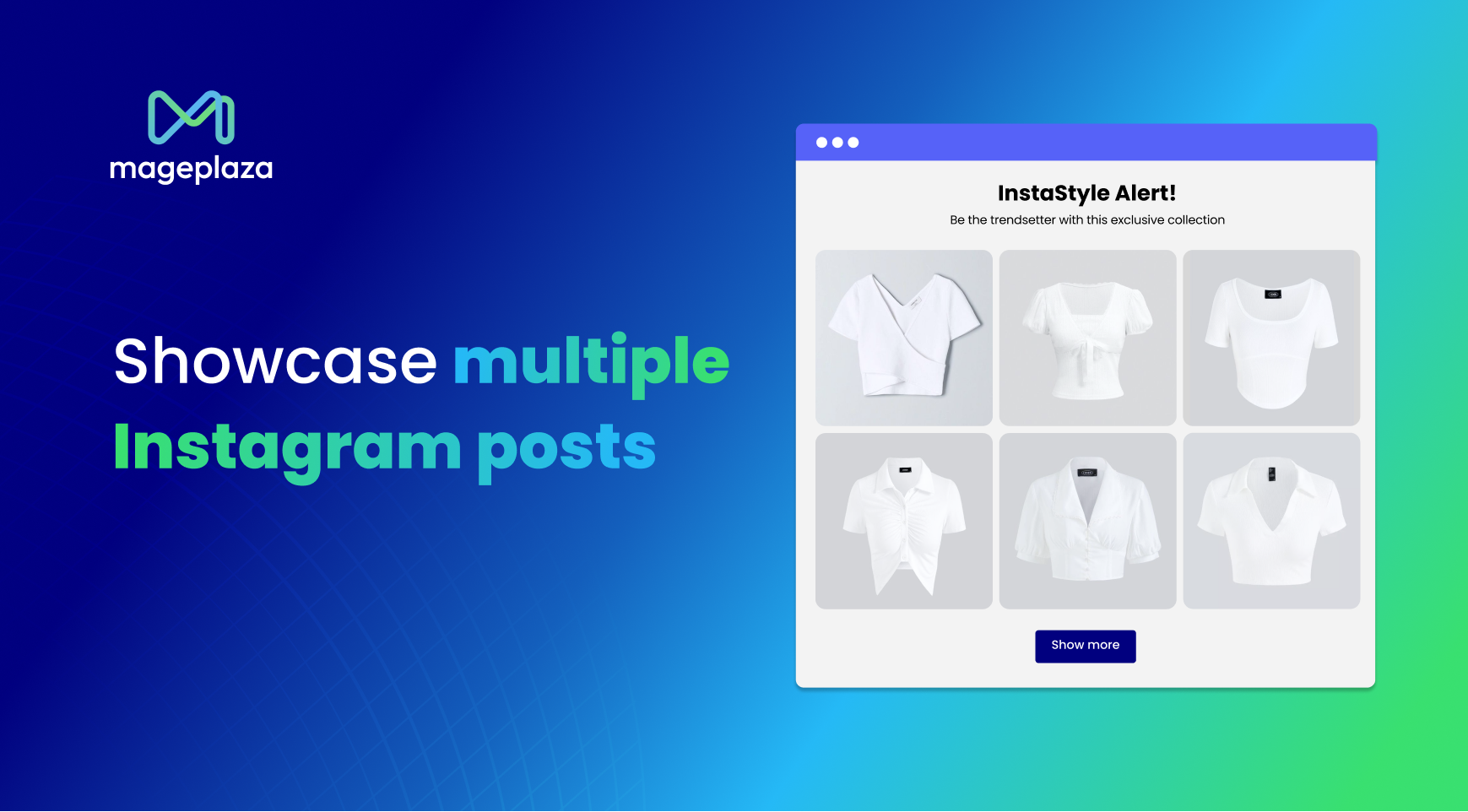Shopify Dropshipping In India: A Comprehensive Guide For Beginners
Summer Nguyen | 01-16-2024

India’s flourishing e-commerce landscape presents many opportunities, but how can you tap into this dynamic market effectively? How can Shopify dropshipping empower you to fulfill your entrepreneurial dreams in India?
In this comprehensive guide, we’ll answer these questions and address crucial aspects of Shopify dropshipping in India. Let’s learn how to navigate the complexities, seize the opportunities, and thrive in India’s vibrant online marketplace.
Is Dropshipping Profitable In India 2024?
Frankly speaking, dropshipping is still profitable in India in 2024, due to the following reasons:
- India’s eCommerce sales are projected to grow at an annual rate of 51%, making it the biggest opportunity for business owners. Dropshipping in India is the perfect way to test the waters, regardless of the products you want to sell.
- Approximately 27% of online retailers are using dropshipping
- The dropshipping market is valued at $301.11 billion as of 2024, with an average annual growth rate of 24.39% predicted between 2020 and 2026
- Dropshipping offers several advantages, such as no inventory management, cost-effectiveness, and being completely digital.
However, the road to success with Shopify dropshipping in India isn’t without its hurdles. You’ll need to be prepared for challenges like:
- The Indian e-commerce market is booming, and dropshipping is becoming increasingly popular. This means you’ll be facing competition from numerous established and new dropshippers.
- You rely on your supplier for product quality, packaging, and shipping timelines. Issues in any of these areas can damage your brand reputation and lead to customer dissatisfaction.
- India’s vast geography and diverse infrastructure can lead to logistical challenges. Cash on Delivery (COD) is a popular payment method, which adds complexity to order fulfillment.
Shopify Development Services
Start generating more revenue with your enhanced Shopify store built by us. No more stress over platform complexity.
Learn moreStep by Step to Shopify Dropshipping in India
Starting a Shopify dropshipping in India involves several steps. Here’s a step-by-step guide to help you get started:
Step 1: Market Research
Before diving into dropshipping, conduct thorough market research to identify potential niches and products with demand in the Indian market. Look for trends, analyze competition, and understand your target audience.
Step 2: Legal Formalities
In India, e-commerce businesses have to comply with certain legal requirements. Consider these aspects:
- Business registration: Decide on your business structure (e.g., sole proprietorship, LLP, Pvt Ltd) and register your business accordingly. This may involve obtaining a GST (Goods and Services Tax) registration if your turnover exceeds the threshold.
- Taxation: Familiarize yourself with India’s tax regulations, especially GST, and ensure you’re charging and remitting taxes correctly.
- Import-export license: If you plan to source products internationally, check if you need an Importer-Exporter Code (IEC).
- Payment gateway: Set up a reliable payment gateway to accept online payments from customers. Popular options in India include Razorpay, PayU, and Instamojo.
- Legal documents: Draft necessary legal documents like terms and conditions, privacy policies, and return policies for your e-commerce store.
Step 3: Create a Business Plan
Develop a comprehensive business plan that outlines your niche, target market, marketing strategies, financial projections, and growth plans. A well-structured plan will be your roadmap for success.
Step 4: Choose a Shopify Plan
Enroll for a Shopify account and select a suitable pricing plan based on your budget and requirements. Shopify offers various plans, including Basic Shopify, Shopify, and Advanced Shopify.

Read more: Shopify Pricing Plans (2024): Which Shopify Plan is For You?
Step 5: Domain Name and Store Setup
Your domain should be relevant to your niche and memorable to potential customers. Consider incorporating keywords related to your products, and if possible, choose a .in domain extension for targeting an Indian audience.
After securing your domain, proceed to set up your Shopify store. Select a theme that suits your niche, customize your homepage, and configure essential settings such as currency (Indian Rupees, INR), shipping zones (domestic and international if applicable), and tax rates.
Additionally, integrate an Indian payment gateway such as Razorpay, PayU, or Instamojo to accept various payment methods commonly used in India.
Step 6: Find Reliable Suppliers
Research potential suppliers rigorously, assessing their reputation, customer reviews, and response times. Ensure that they have experience in dropshipping and a demonstrated history of punctual product deliveries. Set up transparent and efficient communication channels with your chosen suppliers.
Understanding their terms, shipping times, and return policies is crucial for smooth order processing. Maintain open and reliable communication to address any issues arising during the dropshipping process.
Step 7: Product Selection
Select a niche or product category that aligns with the preferences and demands of the Indian market. Conduct thorough market research to identify trends, competition, and target audience interests.
Consider offering various products within your chosen niche to cater to a broader audience. Balancing product variety and market demand is essential to maximize your store’s potential.
Step 8: Pricing and Margins
Calculate each product’s total cost, including the product price, shipping fees, import duties (if applicable), and any other relevant expenses.
When determining your pricing strategy, consider your desired profit margins and the competitive landscape in the Indian market. Strive to offer competitive prices that align with the perceived value of your products while ensuring profitability.
Step 9: Create Product Listings
Creating compelling product listings is vital to attract and convert customers. Craft informative and engaging product titles that incorporate relevant keywords. Optimize these titles for search engines (SEO) to enhance your store’s organic search visibility.
Your product descriptions should be detailed, highlighting features, benefits, and specifications. Anticipate potential customer questions and address them in your descriptions.
Additionally, use high-quality images that showcase your products from various angles. Professional product images contribute significantly to the overall appeal of your listings.
Step 10: Marketing and Promotion
Once your store is set up and your products are listed, it’s time to focus on marketing and promotion.
- Social media marketing: Establish and oversee social media profiles on platforms like Instagram, Facebook, Twitter, and LinkedIn. Post engaging content, run paid ads, and engage with your audience.
Mageplaza Instagram Feed for Shopify
Engage visitors, build trust, and customize effortlessly. Streamline tasks and boost interaction.
Check it out!- Content marketing: Commence a blog within your Shopify store and create valuable content related to your niche. This can include how-to guides, product reviews, and industry insights. Optimize your content for SEO.
- Email marketing: Construct an email roster and send out regular newsletters with promotions, product updates, and valuable content. Use email marketing platforms like Mailchimp or Klaviyo.
- Paid advertising: Establish and oversee paid advertising campaigns on Google Ads, Facebook Ads, and Instagram Ads. Target particular demographics and interests to reach your ideal audience.
- Influencer marketing: Partner with influencers in your specific industry to promote your products. Influencers can create content, reviews, and endorsements that reach their followers.
- Customer reviews: Encourage customers to leave reviews and testimonials on your product pages. Positive reviews build trust and credibility.
- Analytics and monitoring: Use Shopify’s built-in analytics tools and third-party analytics platforms to monitor the performance of your marketing efforts. Adjust your strategies based on data to optimize your ROI.
Step 11: Customer Support and Order Management
Customer support plays a pivotal role in upholding customer satisfaction and guaranteeing the seamless functioning of your dropshipping business. Be responsive to customer inquiries and issues. Set clear expectations regarding shipping times and provide timely updates on order statuses.
Address customer concerns promptly and professionally. Implement an effective order management system to keep track of orders, confirm shipments with suppliers, and monitor delivery status. Use Shopify’s order management features and apps to streamline this process.
Step 12: Monitor and Optimize
Regularly review your product listings, pricing, and marketing strategies. Analyze sales data and customer behavior using Shopify’s analytics tools or third-party apps.

Identify top-performing products and marketing channels, and allocate resources accordingly. A/B testing can help refine your marketing campaigns and website design. Stay updated with e-commerce trends and industry developments to remain competitive in the Indian market.
Explore: Top 38 Shopify stores in India to discover
5 Best Suppliers for Shopify Dropshipping to India
Finding the right dropshipping supplier is crucial for the success of your Shopify store in India. Here’s a breakdown of 5 top options to consider, each with its own advantages and considerations:
1. Indiamart (India-based)
Indiamart shines for its India-based suppliers, eliminating the need for international shipping and potentially leading to faster delivery times for your Indian customers. This is a significant advantage, as long wait times can negatively impact customer satisfaction. Additionally, Indiamart suppliers are more likely to offer products that cater to Indian preferences, giving your store a competitive edge.
However, Indiamart might require a bit more effort on your part. The platform functions more like a supplier directory where you’ll need to browse and potentially contact individual suppliers to determine if they offer dropshipping options. This can be a little time-consuming compared to other solutions with pre-integrated dropshipping functionality.
2. Spocket (US-based)
For dropshippers targeting India, Spocket offers a compelling solution by focusing on products from reliable US and European suppliers. This translates to faster shipping times compared to sourcing from China, a major benefit for Indian customers who might be accustomed to quicker delivery options from domestic online retailers. Spocket also provides a user-friendly Chrome extension that simplifies the process of importing products directly into your Shopify store.
Spocket goes beyond just product selection. It offers valuable features like real-time inventory updates, which helps you avoid overselling. Additionally, automatic order fulfillment streamlines your workflow by automatically sending order details to the supplier once a sale is made. Currency conversion is also handled within the platform, saving you time and potential errors.
3. AliExpress (China-based)

AliExpress is a titan in the dropshipping world, boasting a massive marketplace with an extensive variety of products at competitive prices. This sheer volume allows you to find almost any product imaginable for your store. Many AliExpress suppliers do offer dropshipping options, but it’s crucial to investigate individual shipping times to India, which can vary significantly.
The sheer size of AliExpress also presents a challenge. With so many suppliers, it’s essential to conduct thorough research and vet potential partners. Look for suppliers with positive customer reviews, a proven track record of reliable shipping to India, and a commitment to good product quality. Investing time upfront can save you headaches down the line.
4. CJDropshipping (China-based)
CJDropshipping caters specifically to dropshippers, offering features designed to make your life easier. They boast fast shipping to many countries, including India, which can be a significant advantage. Additionally, CJDropshipping offers valuable branding options like custom packaging and invoices, allowing you to create a more professional customer experience for your Indian audience.
While CJDropshipping streamlines dropshipping operations, it might have a more limited product selection compared to a giant like AliExpress. This could restrict your ability to offer a wide variety of products in your store.
5. Modalyst (US-based)

Modalyst integrates seamlessly with various e-commerce platforms, including Shopify. This makes it a convenient option if you’re already using Shopify for your India-focused store. It offers a curated selection of products from various suppliers around the world, providing a good balance between variety and quality control.
Modalyst goes beyond simple product imports. It provides features like automatic product updates, ensuring your store listings are always current. Additionally, you can set up pricing rules and leverage inventory management tools to streamline your operations.
10 Best Products for Shopify Dropshipping In India
Choosing the right products is essential for the success of your Shopify dropshipping store in India. Here are 10 trending product categories to consider, along with specific examples that cater to the Indian market:
- Fashion Jewelry (especially for women): With a strong fashion sense in India, fashion jewelry is always in high demand. Look for suppliers offering trendy pieces that incorporate traditional elements or cater to specific festivals like Diwali or Holi.
- Ethnic Wear (for men and women): India has a rich heritage of distinct clothing styles across various regions. Offer a selection of trendy ethnic wear that caters to different occasions, from casual wear to festive outfits.
- Mobile Phone Accessories: The Indian mobile phone market is booming. Offer a wide range of phone cases, screen protectors, mobile chargers, and other accessories that are compatible with popular phone models in India.
- Home Decor with a Desi Touch Homes in India are known for their vibrant colors and cultural influences. Offer modern home decor items with a desi touch, or traditional Indian handicrafts to add a touch of cultural flair.
- Ayurvedic Beauty Products: Ayurveda, a traditional Indian system of medicine, is gaining popularity worldwide. Look for suppliers offering natural skincare, haircare, and cosmetic products formulated with Ayurvedic ingredients.
- Fitness Trackers and Smartwatches: Health and fitness are on the rise in India. Target this trend with fitness trackers, smartwatches, and other wearable tech gadgets that promote a healthy lifestyle.
- Travel and Luggage Accessories: Indians love to travel! Offer travel essentials like backpacks, luggage organizers, toiletry bags, and other accessories that cater to both domestic and international travel needs.
- Unique Kitchenware: Food is a big part of Indian culture. Offer innovative kitchen gadgets, appliances, or drinkware that will appeal to Indian home cooks. You can target special occasion needs or everyday cooking essentials.
- Stylish and Functional Office Supplies: The Indian office space is seeing a shift towards modern design and functionality. Offer organizers, desk accessories, and tech equipment that improve office productivity while maintaining a stylish aesthetic.
- Spiritual and Pooja Items: Religion plays a significant role in Indian life. To cater to your audience’s religious needs, offer puja essentials like diyas, incense holders, murtis (idols), and prayer rugs.
FAQs about Shopify Dropshipping India
1. Can I dropship products from international suppliers to customers in India?
Yes, you can dropship products from international suppliers to customers in India. Many successful dropshipping businesses in India source products from international suppliers, particularly from countries like China.
2. What payment gateways are supported by Shopify for Indian dropshipping businesses?
Shopify supports various payment gateways in India, including Razorpay, PayU, Instamojo, CCAvenue, and more. Ensure you choose a payment gateway that aligns with your business needs and integrates seamlessly with Shopify.
3. How can I handle currency conversion and international shipping costs for Indian customers?
Shopify allows you to set your currency preferences and display prices in Indian Rupees (INR). When working with international suppliers, consider currency conversion fees and shipping costs, which may affect your pricing strategy. You can also use apps to automate currency conversion.
4. Which products are best for dropshipping in India?
The best products for dropshipping in India can vary, but popular categories include fashion and apparel, electronics and gadgets, home and kitchen products, health items, jewelry, toys and games, kitchen appliances, pet supplies, beauty and personal care products, home office equipment, and unique handmade products.
When selecting products, consider cultural preferences, quality, pricing, shipping, and legal compliance. Stay updated with market trends to adapt your product selection effectively.
5. Are there any restrictions on dropshipping certain types of products in India?
Yes, there may be restrictions or regulations on certain products, such as pharmaceuticals, alcohol, firearms, and copyrighted material. Ensure that you comply with all relevant laws and regulations when choosing your product range.
Conclusion
As you venture into Shopify dropshipping India, stay attuned to market trends, responsive to your customers’ needs, and open to innovation. Each step forward strengthens your business and contributes to the dynamic landscape of Indian e-commerce.
Here’s to your journey—a journey marked by growth, prosperity, and realizing your entrepreneurial aspirations in India’s ever-evolving online marketplace. The future is yours to shape.










![Top 20+ Must-have Shopify Apps for 2025 [Free & Paid] - Mageplaza](https://cdn2.mageplaza.com/media/blog/must-have-shopify-apps/top-must-have-shopify-apps.png)
![[2025 Updates] Top 10+ Upsell Apps for Shopify - Mageplaza](https://cdn2.mageplaza.com/media/blog/best-upsell-shopify-app/cover.png)
